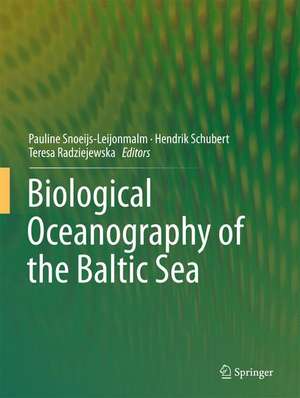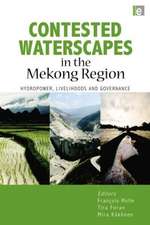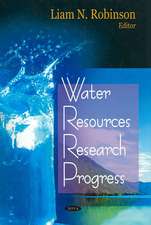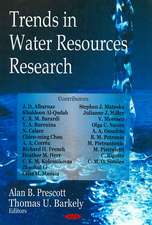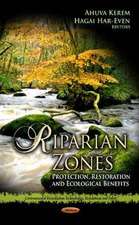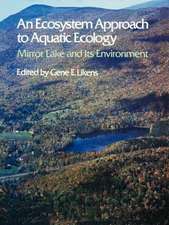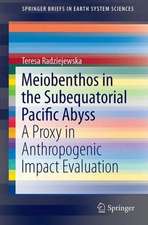Biological Oceanography of the Baltic Sea
Editat de Pauline Snoeijs-Leijonmalm, Hendrik Schubert, Teresa Radziejewskaen Limba Engleză Hardback – 19 apr 2017
pt;font-family:"Arial","sans-serif"; color:#262626">The first part of the book presents the challenges for life processes and ecosystem dynamics that result from the Baltic Sea’s highly variable recent geological history and geographical isolation. The second part explains interactions between organisms and their environment, including biogeochemical cycles, patterns of biodiversity, genetic diversity and evolution, biological invasions and physiological adaptations. In the third part, the subsystems of the Baltic Sea ecosystem – the pelagic zone, the sea ice, the deep soft sea beds, the phytobenthic zone, the sandy coasts, and estuaries and coastal lagoons – are treated in detail with respect to the structure and function of communities and habitats and consequences of natural and anthropogenic constraints, such as climate change, discharges of nutrients and hazardous substances. Finally, the fourth part of the book discusses monitoring and ecosystem-based management to deal with contemporary and emerging threats to the ecosystem’s health.
| Toate formatele și edițiile | Preț | Express |
|---|---|---|
| Paperback (1) | 799.70 lei 38-44 zile | |
| SPRINGER NETHERLANDS – 25 iul 2018 | 799.70 lei 38-44 zile | |
| Hardback (1) | 833.18 lei 3-5 săpt. | +87.54 lei 10-14 zile |
| SPRINGER NETHERLANDS – 19 apr 2017 | 833.18 lei 3-5 săpt. | +87.54 lei 10-14 zile |
Preț: 833.18 lei
Preț vechi: 1041.46 lei
-20% Nou
Puncte Express: 1250
Preț estimativ în valută:
159.42€ • 166.90$ • 131.92£
159.42€ • 166.90$ • 131.92£
Carte disponibilă
Livrare economică 15-29 martie
Livrare express 04-08 martie pentru 97.53 lei
Preluare comenzi: 021 569.72.76
Specificații
ISBN-13: 9789400706675
ISBN-10: 9400706677
Pagini: 400
Ilustrații: XXXI, 683 p. 430 illus., 422 illus. in color.
Dimensiuni: 210 x 279 x 35 mm
Greutate: 2.37 kg
Ediția:1st ed. 2017
Editura: SPRINGER NETHERLANDS
Colecția Springer
Locul publicării:Dordrecht, Netherlands
ISBN-10: 9400706677
Pagini: 400
Ilustrații: XXXI, 683 p. 430 illus., 422 illus. in color.
Dimensiuni: 210 x 279 x 35 mm
Greutate: 2.37 kg
Ediția:1st ed. 2017
Editura: SPRINGER NETHERLANDS
Colecția Springer
Locul publicării:Dordrecht, Netherlands
Public țintă
GraduateCuprins
PART I: The Baltic Sea environment.- Chapter 1: Brackish water as an environment.- Chapter 2: Why is the Baltic Sea so special to live in?.- PART II: Ecological processes in the Baltic Sea.- Chapter 3: Biogeochemical cycles.- Chapter 4: Patterns of biodiversity.- Chapter 5: Biological invasions.- Chapter 6: Genetic diversity and evolution.- Chapter 7: Physiological adaptations.- PART III: Subsystems of the Baltic Sea ecosystem.- Chapter 8: The pelagic food web.- Chapter 9: Life associated with Baltic Sea ice.- Chapter 10: Deep soft seabeds.- Chapter 11: The phytobenthic zone.- Chapter 12: Sandy coasts.- Chapter 13: Estuaries and coastal lagoons.- PART IV: Monitoring and ecosystem-based management of the Baltic Sea.- Chapter 14: Biological indicators.- Chapter 15: Bio-optical water quality assessment.- Chapter 16: Chemical pollution and ecotoxicology.- Chapter 17: Ecosystem health.- Chapter 18: Ecosystem goods, services and management.
Notă biografică
Pauline Snoeijs is a professor in Pelagic Systems Ecology at the University of Stockholm. Her current research deals with the pelagic system of the brackish Baltic Sea and integrates ecology, ecophysiology and biochemistry.
Textul de pe ultima copertă
This is the first comprehensive science-based textbook on the biology and ecology of the Baltic Sea, one of the world’s largest brackish water bodies. The aim of this book is to provide students and other readers with knowledge about the conditions for life in brackish water, the functioning of the Baltic Sea ecosystem and its environmental problems and management. It highlights biological variation along the unique environmental gradients of the brackish Baltic Sea Area (the Baltic Sea, Belt Sea and Kattegat), especially those in salinity and climate.
The first part of the book presents the challenges for life processes and ecosystem dynamics that result from the Baltic Sea’s highly variable recent geological history and geographical isolation. The second part explains interactions between organisms and their environment, including biogeochemical cycles, patterns of biodiversity, genetic diversity and evolution, biological invasions and physiological adaptations. In the third part, the subsystems of the Baltic Sea ecosystem – the pelagic zone, the sea ice, the deep soft sea beds, the phytobenthic zone, the sandy coasts, and estuaries and coastal lagoons – are treated in detail with respect to the structure and function of communities and habitats and consequences of natural and anthropogenic constraints, such as climate change, discharges of nutrients and hazardous substances. Finally, the fourth part of the book discusses monitoring and ecosystem-based management to deal with contemporary and emerging threats to the ecosystem’s health.
The first part of the book presents the challenges for life processes and ecosystem dynamics that result from the Baltic Sea’s highly variable recent geological history and geographical isolation. The second part explains interactions between organisms and their environment, including biogeochemical cycles, patterns of biodiversity, genetic diversity and evolution, biological invasions and physiological adaptations. In the third part, the subsystems of the Baltic Sea ecosystem – the pelagic zone, the sea ice, the deep soft sea beds, the phytobenthic zone, the sandy coasts, and estuaries and coastal lagoons – are treated in detail with respect to the structure and function of communities and habitats and consequences of natural and anthropogenic constraints, such as climate change, discharges of nutrients and hazardous substances. Finally, the fourth part of the book discusses monitoring and ecosystem-based management to deal with contemporary and emerging threats to the ecosystem’s health.
Caracteristici
The first comprehensive textbook on the biology and ecology of the Baltic Sea Comprehensive summary of up-to-date Baltic Sea science (biology, ecology) for researchers in marine sciences Highlights the special nature of biological variation in the Baltic Sea Discusses ecosystem-based management Highlights biological variation along the unique environmental gradients of the brackish Baltic Sea Area Includes supplementary material: sn.pub/extras
